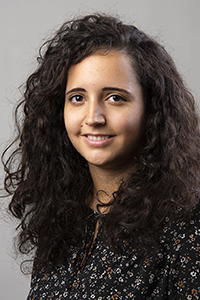Marina Palmieri

Marina Palmieri
I am currently pursuing my PhD in Classical Archaeology at the University of Vienna, where I also completed both my Bachelor's and Master's degrees in the same field. During my undergraduate studies, in 2016/2017, I participated in the ERASMUS+ program at Durham University in the United Kingdom for a year.
Over the years, I have actively engaged in various excavations, projects, and internships, broadening my understanding across multiple fields including archaeobotany, bioanthropology, museology. Further, I deepened my skills in drawing and processing excavation finds.
For my Master's thesis, I studied villae rusticae in the Ager Stabianus, focusing particularly on their role in the production of wine and oil.
As of October 2021, I work as a research assistant (prae-doc) in the FWF project Meaningful sherds: sigillata from pre-consumption deposits (Head of project: Univ.-Ass. Dr Julia Kopf).
Research interests: Provincial Roman Archaeology, Roman Archaeology, Terra Sigillata, Trade and Economy of Ceramics, villae rusticae in Southern Italy, Wine Production
Current research topic: Pre-consumption deposits: An examination regarding the production of Terra Sigillata and its trading network in the 2nd c. AD
Pre-consumption deposits offer valuable insights into the production and intended distribution of commercial items, and thus are a crucial, but hitherto largely unexplored entry point into ancient economic systems. These kinds of deposits, covering the steps between production and consumption, can be broadly divided into three categories: shipwrecks, quay-side dumps and quay-side warehouses, and shops and storerooms.
Only a few of these assemblages have been studied in detail, and even fewer have been considered in a wider context, which is why possible insights into the production and trade situation have remained unnoticed.
Starting from the Sammelfund 1911 from Bregenz, Austria, composed of Terra Sigillata dating to the 2nd century, my objective is to analyse pre-consumption deposits consisting of Terra Sigillata of this period. A comparative study across various sites from the north western provinces enables a better understanding of Terra Sigillata's production, organisational aspects of trading networks, and distribution processes allowing us to draw conclusions regarding the origin (production of Terra Sigillata itself) and connectivity (its trade routes and supply mechanisms) of these objects.
Publications:
- with J. Kopf, Un "pre-consumption deposit" de céramique sigillée à Brégence/Brigantium (Autriche), in : L. Rivet (Hrsg.), Actes du congrès de Clermont-Ferrand 26–29 mai 2022 (Marseille 2022) 355–360.
